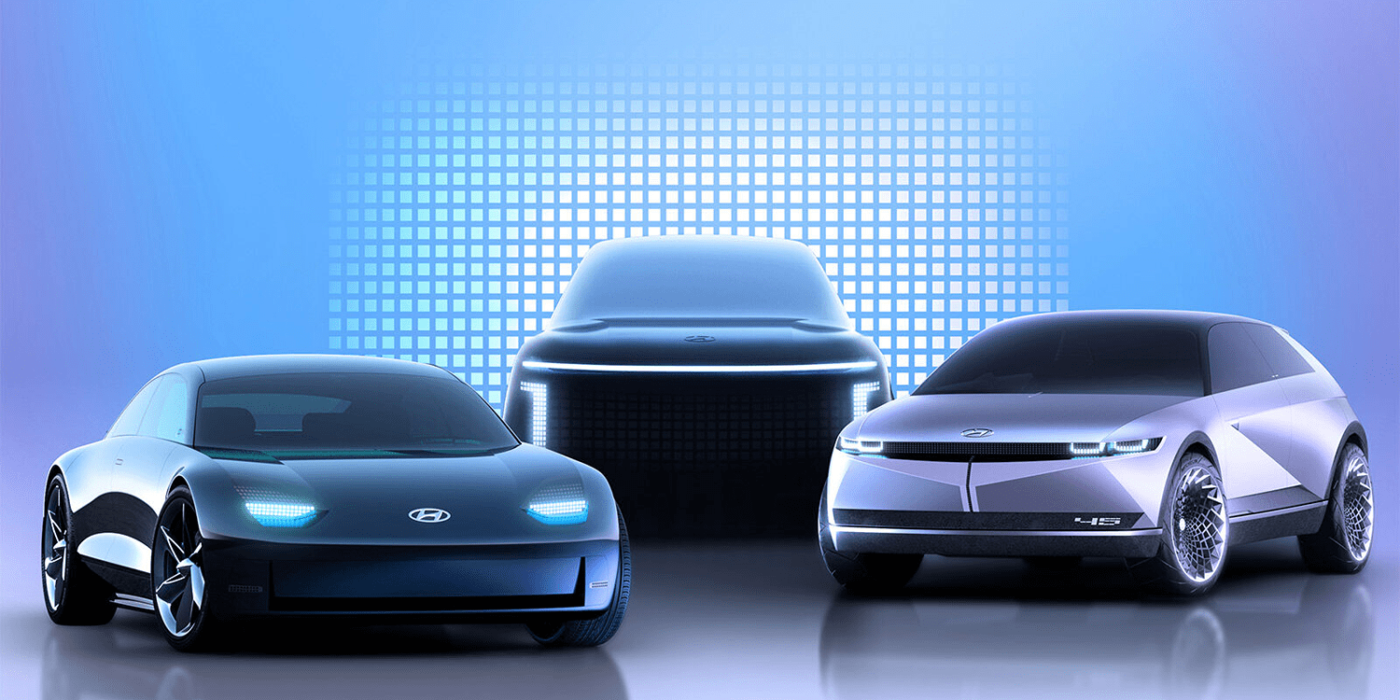Hyundai: 12 BEV by 2025; launches fuel cell brand HTWO
Hyundai plans to introduce at least 12 battery-electric models by 2025, according to the updated ‘Strategy 2025’. This includes Hyundai to rely on the new 800-volt platform E-GMP which the carmaker will first use to power the Ioniq 5 next year.
The Korean company introduced the roadmap to electrification in 2019 with the stated aim to become one of the three largest EV manufacturers in the world by 2025. Annual sales would then need to include 670,000 electric vehicles of which Hyundai assumes to be 560,000 BEV and 110,000 fuel cell vehicles. These targets remained in place with the new announcement.
The company wants to electrify most of the new models in key markets such as South Korea, the USA, China, and Europe by 2030. Emerging markets such as India and Brazil are expected to follow by 2035. By 2040, Hyundai Motor Company aims to achieve an eight to ten per cent share of the global electric vehicle market. It is considering fully electrifying its product range in key international markets by 2040. Also planned is the “democratisation” of e-cars in emerging markets such as India, Russia and Brazil.
To achieve greater electrification, Hyundai says the would “secure manufacturing competitiveness through increased parts standardisation and reduced cost.” This also includes regionalisation for EV products. For the E-GMP platform, Hyundai claims greater efficiency and has turned Ioniq into a sub-brand this August for electric cars based on the new architecture as reported.
Hyundai will also make efforts in charging infrastructure as well as battery businesses. The company plans to build 20 high-speed charging stations in Korea by 2021. Overseas, it will continue to carry out high-speed charging network projects with various partners, such as high-speed charging network projects and has recently joined Ionity in Europe.
Hyundai also confirmed a dedicated BEV model and a derived EV model in 2021 under the Genesis premium label but did not disclose details. The latest we heard of a Genesis model was the eG80 that will rely on the E-GMP architecture when it comes to market in late 2021. The company also plans to expand its presence in China and Europe.
For fuel cell technology, Hyundai today announced a new stand-alone brand HTWO. It is also to form the basis for developing a next-generation fuel cell system that can also power aircraft, forklifts, ships and trains. In the air segment, in particular, Hyundai is working on what the company calls urban air mobility (UAM) with existing efforts to be continued, both in passenger as well as cargo transport.
Hyundai pledges HTWO to deliver “enhanced performance and durability at an affordable price in a lighter architecture with enhanced energy density” to offer a more diversified fuel cell vehicle portfolio. The company also mentions “strategic partnerships with hydrogen, energy and logistics companies around the world” one of which is the recently announced partnership with Britain’s Ineos, primarily for hydrogen supply. HTWO will initially focus on “major hub regions” for Hyundai, namely Korea, the United States, Europe and China.
“The year 2020 has been the first year to implement our Strategy 2025. Despite a challenging business environment caused by the COVID-19 global pandemic, we have successfully established the foundation for business growth for the next five years,” said President Lee.
In numbers, this translates to an investment of KRW 60.1 trillion by 2025, that is about 45,5 billion euros. This is an upgrade of the plan announced in December 2019 and will be carried out despite deteriorated market conditions due to the pandemic, according to Hyundai. About a third, KRW 23.5 trillion, is slated to build “future technologies” such as electrification, hydrogen fuel cells, UAM, autonomous driving, mobility service and platform, connectivity, AI and robotics.
hyundainews.com (strategy), hyundainews.com (HTWO)





0 Comments